Canon AE-1 Service Manual
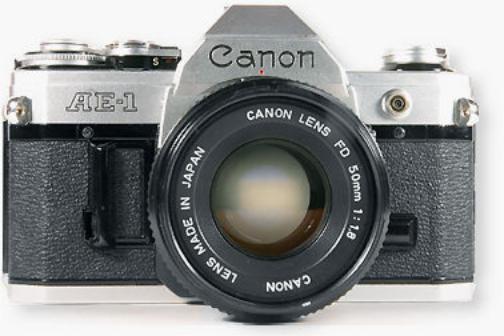
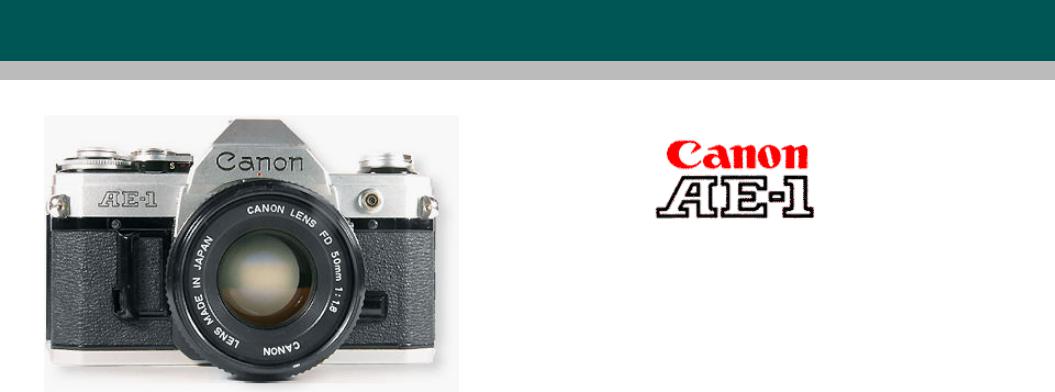
Modern Classic SLR Series - Canon AE-1
Modern Classic SLR Series
The Canon AE-1 - Index Page
The Canon AE-1 was the first 35mm SLR camera to be controlled solely via a built-in Central Processing Unit (CPU) and made SLR photography avaialble to beginners and amateurs at a reasonable prices - with a record of over 5 million units been sold worldwide, the success of which firmly established Canon as the leader in camera innovations.
Variant: Special application medical camera, Canon FA
It revolutionized many of the concepts for future camera designs especially in the field of electronic applications and
mass produced technique with a lower cost of production with the use of plastic injection molding, resulting in simpler assembly of parts. It also popularised and made devices like Power Winder and electronic Speedlites a household name in the
consumer market. The camera was controlled entirely by electronics precision rather than by mechanical functions - and depends solely on battery power for all of its functions. Despite defying the mainstream camera design concept in the '70s, the AE-1 came through well and attained a huge during its availability years. This was very much due to Canon's efforts in promoting the camera - it offers very precise and stable timing of shutter speeds, which was also extended to other areas like auto flash-syncronisation speed when any dedicated Canon electronic Speedlites is used. Although the technologies
employed within the AE-1 looked very simple when compared with today's modern SLR cameras, it has to be remembered that during its era, the market was still dominated largely by those heavy, mechanically-controlled type of cameras. Canon used these points to enhance the advantages of electronic applications in camera designs - where in many areas,
electronic cameras do offer much more precise timings and other features that can never be matched by mechanical technologies.
However, the AE-1 was not in anyway a professional-grade SLR as compared to the Canon F-1. It was generally regarded as
a classic and top amateur SLR model due to the impact it has created with its then innovative concept that went on to influence other future camera designs, both Canon and other makes, of the industry as a whole. The camera was eventually replaced by a newer model with added features, the AE-1 Program in 1981, following on the success of Canon's
semi-pro and top-of-the-line A-series camera, the multi-mode Canon A-1, which made its debut in 1978.
file:///H|/camaras de fotos/The Canon AE-1 - Index .htm (1 de 2) [08/10/2007 07:06:21 p.m.]
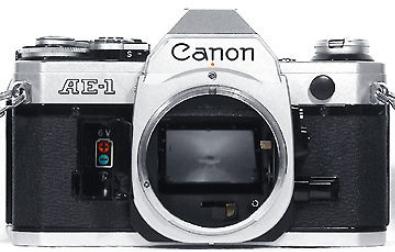
Modern Classic SLR Series - Canon AE-1
Credit: Image courtesy of Mr. Claudio®. Image(s) copyright © 2003. All rights reserved. Please respect the
visual property of the contributing photographer.
file:///H|/camaras de fotos/The Canon AE-1 - Index .htm (2 de 2) [08/10/2007 07:06:21 p.m.]
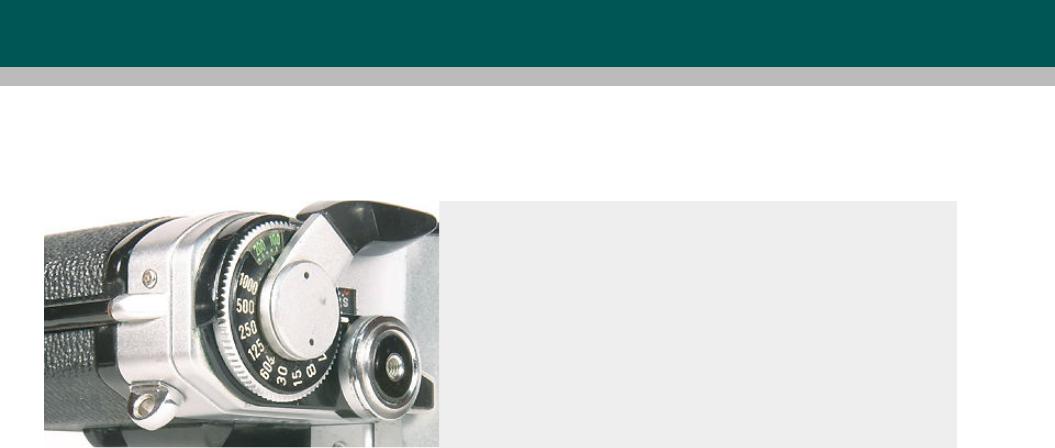
The Canon AE-1 - Part I
Modern Classic SLR Series
The Canon AE-1 - Introduction
Characteristics 1. Total Automatic System with a built-in CPU (Central Processing Unit), the first 35mm SLR camera in the world to do so.
2.Shutter Speed Priority AE Camera Good for Fast Breaking Action. With Less Chance of Camera Shake.
3.Compact and Lightweight Design Facilitating Mobility and Handling Ease.
4.Continuous Shooting with Power Winder A.
5.AE (Automatic Exposure) Computer Flash Unit, Speedlite 155A - world's first Dedicated autoflash.
6.Full Use of Canon FD Lenses.
CANON AE-l'S MAIN FEATURES
Credit: Image courtesy of Mr. Claudio®. Image(s) copyright
© 2003. All rights reserved. Please respect the visual property of the contributing photographer.
1. Very Little Battery Consumption.
The battery lasts the equivalent of 20,000 shutter releases or one year under normal use.
|
Usable Batteries |
Silver Oxide Battery (6V) |
Eveready (UCAR) No. 544 JIS 4G13, Mallory PX28 |
Alkaline Manganese Battery (6V) |
Eveready (UCAR No.537, Mallory 7K13 |
2.Convenient Finger Grip Bar.
3.Battery Check Button.
OK if the meter needle rests below the index. Without sufficient battery power, a safety mechanism will prevent the shutter release. This button also serves to cancel the self-timer operation.
4. Electromagnetic Shutter Release Button
Activated by a Very Smooth Touch. Two-step shutter button. Light metering is activated by the halfway
file:///H|/camaras de fotos/The Canon AE-1 - Introduction.htm (1 de 5) [08/10/2007 05:30:34 p.m.]
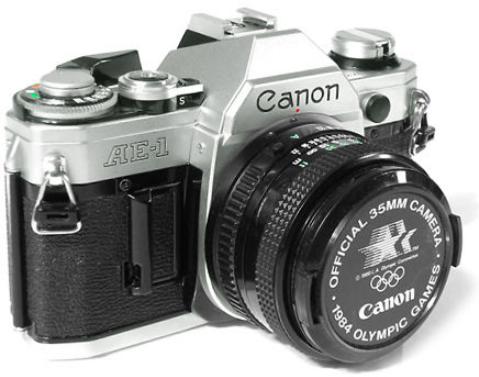
The Canon AE-1 - Part I
depression and shutter release by the further depression.
5.Immediate Response Metering. Light metering takes only 0.001 sec. at EV 12.
6.Shutter Speed Priority AE Camera.
High mobility. Less chance of camera shake. Effective for fast breaking action.
The Canon AE-1 represented a landmark in the history of SLR (Single-Lens-Reflex) cameras. It was not the world's first automatic SLR since competitors like Pentax has its automatic exposure cameras with the screw-mount ES II and Spotmatic while Nikon had its Nikkormat EL in 1972, Minolta introduced
its aperture priority AE SLR with some quite high-end and truly impressive features such as interchangeable prism and focusing screens, the XK model and even the Olympus had
its compact yet feature-loaded Olympus OM2n long before
the FD-mounted, automatic exposure model, Canon AE-1 was introduced.
Credit: Image courtesy of Mr. Joe Westerberg® from Palm Springs, CA U.S.A.. who is a collector for various photo gear, he also has an Ebay Section where
occasionally trading some photo equipment. Image(s) copyright © 2003. All rights reserved. Please respect the
visual property of the contributing photographer.
<<<-- I kept puzzled why a Canon AE-1 was used for the Olympic 84 instaed of the Canon AE-1 Program. Anyway, there was another more well known model where Canon used to commemorate the 1984's LA Olympic, which uses
the Canon New F-1 body chassis.
7. Compact and Lightweight Design.
590g (20-13/16 ozs.) body only. 790g (27-7/8 ozs.) with the 50mm f/1.8 S.C. Iens. 895g (31-9/16 ozs.) with the 50mm f/1.4 S.S.C. Iens.
8. Design Based on Human Engineering Technique.
Rounded back contours and large operational parts that fit to hand. Finger grip bar. Film advance with 120° throw. One finger operation.
9. Other Features.
Interchangeable back cover. Memo holder.
Backlight control switch.
file:///H|/camaras de fotos/The Canon AE-1 - Introduction.htm (2 de 5) [08/10/2007 05:30:34 p.m.]
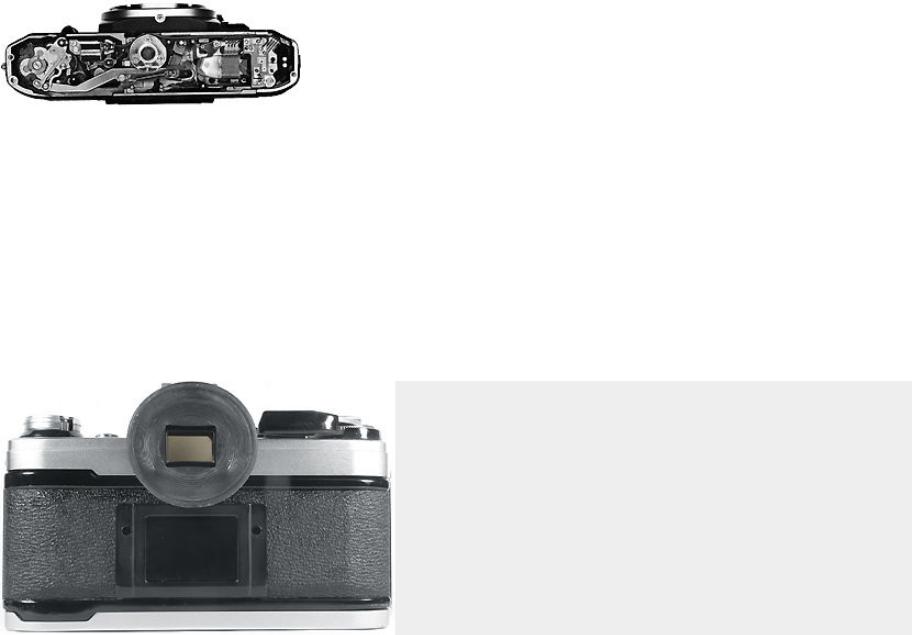
The Canon AE-1 - Part I
Electronic self-timer.
But up to the mid-'70s, electronics control and applications in SLR cameras were still limited, for example, where the mechanical designs were largely responsible for much of the operations. But the AE-1 was the first camera in the world to incorporate a CPU (Central Processing Unit) which enabled automatic exposure, memory transmission of signals, display, regulation of time and completion signal are all electronically controlled.
All these were packed in a economical price range - it is an entirely new kind of SLR camera during that time. Canon AE-1 was massed produced with new manufacturing and assembling techniques even though it had made its debut during an economic slump. The high degree of automation was not been restricted only to
the camera. It was extended to the various accessories, all with the same standard of precision. The AE-1 was also the first camera to offer a totally automated electronic photographic system. It takes its name, AE-1 (Automatic Exposure-One), from this concept.
Application of Electronics is the Cornerstone of the Entire Design Automation in the AE-1 was made possible by the application of the 'most advanced' available electronic technologies during the seventies (Although it may sound pretty much outdated when compared with today's electronics standard), and after
a thorough analysis of all the mechanisms and their operations. The important mechanical features made way for the electronic ones, thus changing the very essence of the camera's design.
As a result, a miniature computer (CPU) was successfully incorporated in the AE-1 for the first time in the world to compute, judge, control, display and regulate required information - in certain ways, unmatched by mechanical mechansim especially where the precise timing of the shutter speeds and electronic flash compatibility.
Credit: Image courtesy of Mr. Claudio®. Image(s) copyright
© 2003. All rights reserved. Please respect the visual property of the contributing photographer.
The  (Integrated Injection Logic), as far as its application in photography is concerned, was the most outstanding achievement in the field of electronics during the early and mid-'70s. An LSI digital circuit
(Integrated Injection Logic), as far as its application in photography is concerned, was the most outstanding achievement in the field of electronics during the early and mid-'70s. An LSI digital circuit
file:///H|/camaras de fotos/The Canon AE-1 - Introduction.htm (3 de 5) [08/10/2007 05:30:34 p.m.]
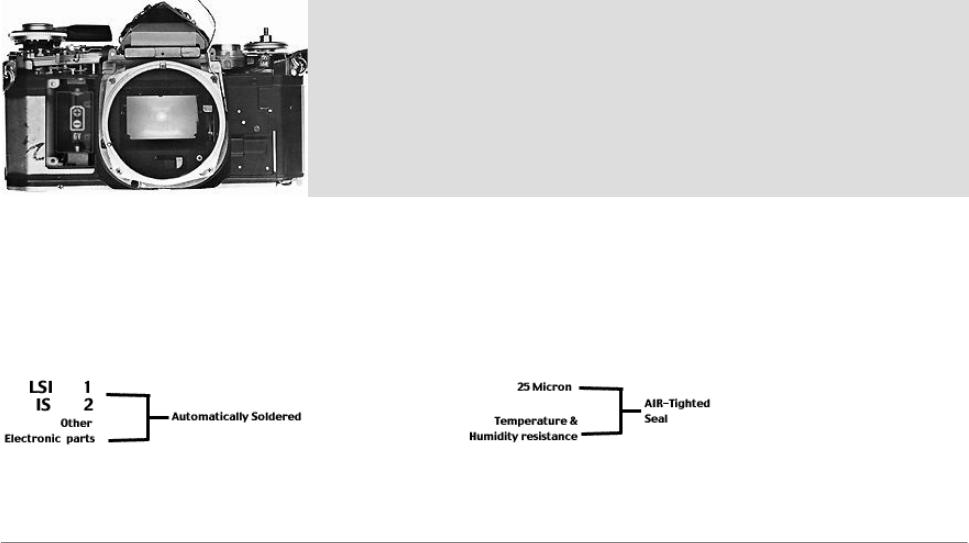
The Canon AE-1 - Part I
with extremely high properties of accumulation, an operational amplifier, a circuit with full use of an analog switch, a hyperbolic function resistance using both thick and thin film technology, an analogdigital convertor, and the proper interfaces, together with their constructions and arrangements in modular form, represent the technological breakthroughs in camera design and made mass production possible, which in turn,
made photography more affordable to the general consumers.
Exceptional Reliability through Application of Electronics The Canon AE-1, since it employed computer technology and its overall design was based on electronics, opened the doors to a new age in the camera world. In order to make an inter-related package out of all the inner mechanisms and to automatize the assembly process, each and every part must be built with a very high degree of precision.
And Canon extensively used computers to automate the design of the modules as well as the assembly, manufacturing and finishing processes.
In a way, the AE-1 has influenced (and inspired) many other manuacturers to look into the application of plastic materials in camera manufacturing to reduce costs of production. Although the Canon AE-1 has
shinny metallic finishing and even sounds like a metal when you used your finger to knock on its shell, in reality, it was a clever use of a production technique with an underlaying coating of Iron Oxide benealth the plastic which gave it such a similar metallic feel. But the key essential parts like the lens mount, had used metal as the prime material. But undeniably, the modular construction of the camera allowed acceleration in its production with the more uniformed quality control..
Flexible Substrate of the Canon AE- 1
 (integrated Injection Logic) High grade of LSI technique used. Equivalent to three chips of IC consisting of more than 1,000 elements.
(integrated Injection Logic) High grade of LSI technique used. Equivalent to three chips of IC consisting of more than 1,000 elements.
file:///H|/camaras de fotos/The Canon AE-1 - Introduction.htm (4 de 5) [08/10/2007 05:30:34 p.m.]
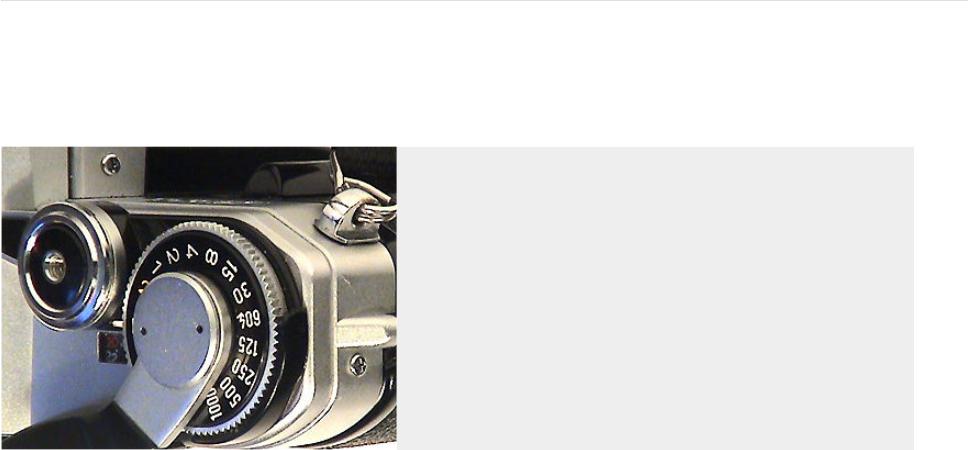
The Canon AE-1 - Part I
By using new production methods and the adoption of highly advanced packaging techniques in the manufacture of electronics circuitry, the vital parts were completely sealed to keep out dust and humidity and reduce the effects of temperature.The IC and resistance circuits were built as units. Not only was the wiring streamlined
to increase efficiency, but also the new modular joints and all other main parts were completely sealed to obtain the best possible weather proofing (but it was not a water proof camera).
Interface Interface as a common boundary of mechanics and electronics. Three magnets: 1) For camera function start, 2) For AE aperture control, 3) For second shutter curtain control were used to enhance reliability and precision which provides a matching precision assured by ball bearings.While combination of permanent magnet and electromagnet which use very little battery consumption and the omission of holding mechanisms.
Credit: Image courtesy of Mr. Claudio®. Image(s) copyright
© 2003. All rights reserved. Please respect the visual property of the contributing photographer.
file:///H|/camaras de fotos/The Canon AE-1 - Introduction.htm (5 de 5) [08/10/2007 05:30:34 p.m.]
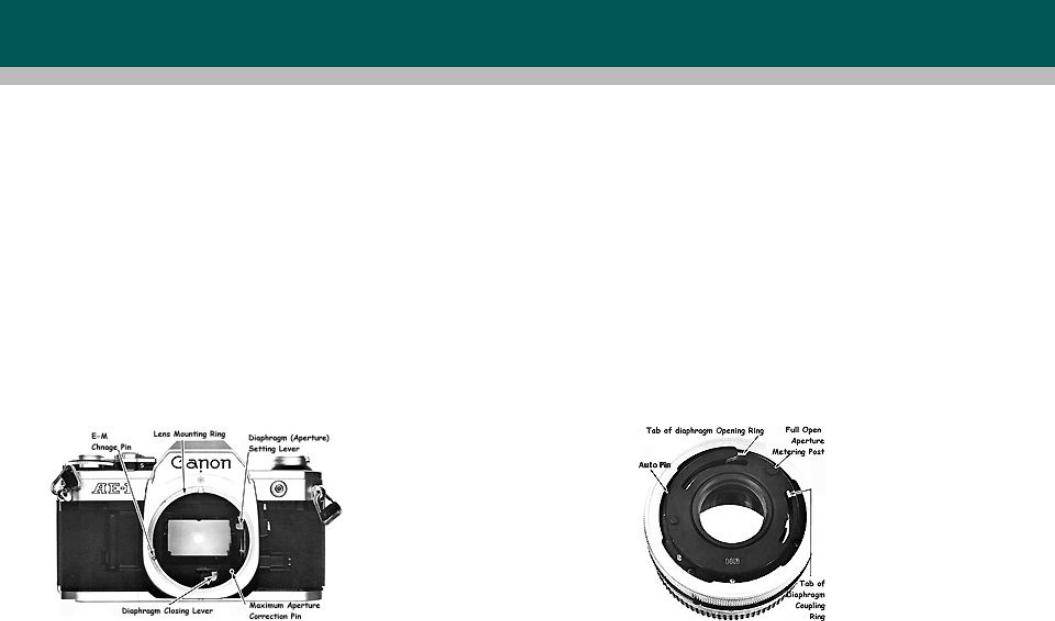
The Canon AE-1 - Part II
Modern Classic SLR Series
The Canon AE-1 - Part II
Shutter Priority Automatic exposure (AE) System Canon's earlier screw mount models, the EX EE (1969) and EX AUTO (1972) have already offered Shutter-priority AE in their exposure control system while the FD lenses, which also used the famed breech-lock mount (but with auto-diaphram) as found in the FL-type lenses, were introduced along with the Canon F-1 in 1971. It was still too early to see an SLR model exploring
the potential benefits of what the 'new' and sophisticated breech lock mount system these FD lenses can offer.
The AE-1, which has a Shutter-priority AE system that can automatically decides the correct diaphragm opening of the lens you are using according to the light the subject is reflecting, based on the shutter speed that has been previously set. This is the meaning of shutter speed priority. The pins and structures of all FD lenses allows the AE-1 to couple with the functions of the Shutter speed priority AE.
Therefore, as you compose the picture, you can freely choose the shutter speed that corresponded to the speed at which the subject is moving. This is perhaps a 'proprietary' and a fore sighted vision, as Canon and Minolta were the only two manufacturers that have their lenses capable of providing Shutter priority AE before1979 (Minolta XD-7 in 1977 was the first to offer both Aperture and Shutter priority AE in a SLR, followed by the Canon
A-1 a year later in 1978, Nikon has their first shutter priority AE model only in 1983 with the Nikon FA). Thus, it is not exaggerating to say that Canon is indeed the pioneer in this field.
A Gentle Touch Activates the Shutter Button This unique shutter button activates a complex of electronically controlled functions, a technological feat since such a design has never been realized previously by the other manufacturers. (For instance, the first electro touch meter activated shutter release button was
file:///H|/camaras de fotos/The Canon AE-1 - Part II.htm (1 de 5) [08/10/2007 05:43:44 p.m.]
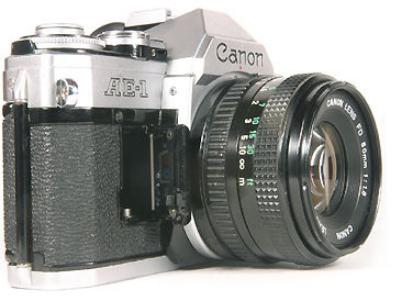
The Canon AE-1 - Part II
only seen in the compact Nikon EM in 1979). As opposed to the conventional mechanical systems, it serves as
a switch to turn the electronic circuitry on or off, and operates magnetically, in order to make the shutter release extremly fast and smooth.
The design of the shutter release button also uses the sequential electric supply ON and OFF. Power is sequentially switched on-off only when the shutter button is depressed and this minimized power consumption. Furthermore, it decreased harmful electric noises.
Immediate Response Metering From light metering to exposure setting, all the functions are electronically controlled. With this astounding, revolutionary system, the very instant the shutter button is pressed, the electronic brain (CPU) immediately computes the photographic information and produces
theoperating command. Light metering takes place at a speed impossible to attain with other cameras. In EV 1 lighting conditions, light metering takes but only 0.04 sec. With other features like exposure compensation button for an even more precise control of AE photography, there were plenty of ways that can be used to handle automatic exposures without the need to worry about inaccuracies in metering and exposure timing. The shutter button activates light metering and shutter release in succession and practically simultaneously.
0.001 sec. at EV 12 (1/125 sec., f/5.6)
0.04 sec. at EV 1 (1 sec., f/1.4)
An Electronic Brain for Instantaneous Control For the first time in the world, this camera adopts a system based on  (lntegrated Injection Logic) technology, the most advanced electronic development applicable to photography during that time. The electronic brain (CPU) controls all functions something no other similar class of camera offered during that period.
(lntegrated Injection Logic) technology, the most advanced electronic development applicable to photography during that time. The electronic brain (CPU) controls all functions something no other similar class of camera offered during that period.
Credit: Image courtesy of Mr. Claudio®. Image(s) copyright © 2003.
All rights reserved. Please respect the visual property of the contributing photographer.
Silicon Photocell and Logarithmic Amplifier In A Single IC The SPC (silicon photocell) is well known for its outstanding photo-sensitive characteristics which yields greater responsiveness with greater linearity (straight line characteristic) and a wider metering range.
file:///H|/camaras de fotos/The Canon AE-1 - Part II.htm (2 de 5) [08/10/2007 05:43:44 p.m.]
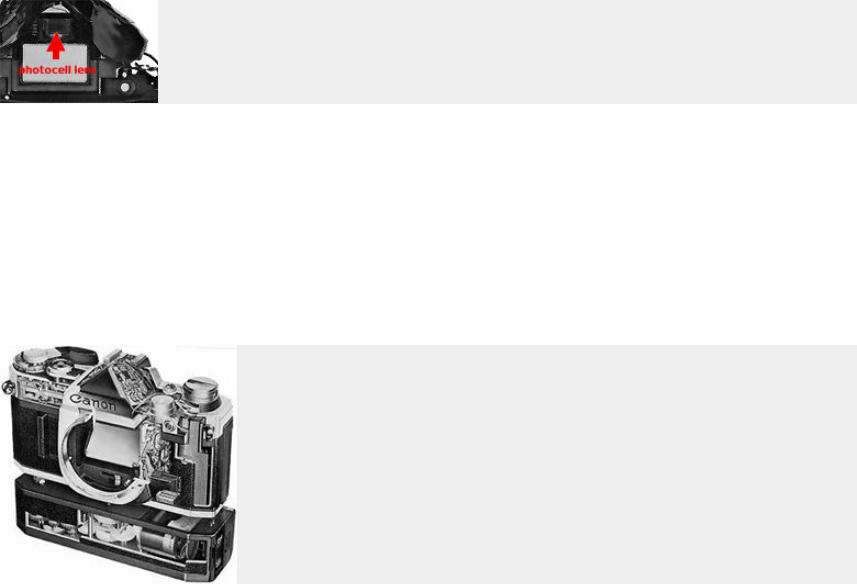
The Canon AE-1 - Part II
The SPC cell, housed near the eyepiece, has a logarithmic amplifier and a special, immediate response circuit, integrated into a single IC in order to obtain the speediest responsiveness while
at the same time ensuring remarkable overall durability.
Power-Saving Circuit The main parts were designed so as to require the minimum of energy while a sequential command controls energy cut-off and supply. Thus, there is no unnecessary battery consumption. A battery lasts the equivalent of 20,000 shutter releases (almost 556 rolls of 36-exposure film) in
continuous photography, or one year under normal use.
Compact, Light weight Design for Great Handling Ease Although still consider bulkier when compared with compact SLR cameras such as the Olympus OM-1, but within the Canon line, the body dimensions have been reduced as compared with other models such as Canon F-1, and the lightweight structure, with a
special finger grip and rounded back contours, provides great handling ease.
Automatic Film Winding with the Canon Power winder A
There is no doubt that AE-1 has helped Canon shoot to the top as a major 35mm SLR camera manufacturer, with some original ideas such as automatic film advance devices using a power winder, a convenient and economical accessory in photography. The Power Winder A, extremely easy to attach, enables the AE-1 to photograph continuously at up to 2 frames per second. This feature is enhanced by the fact that actual handling of the AE-1 is very much the same with or without this accessory attached.
* More info on the Winder A and Winder A2
Canon Speedlite 155A, the World's First AE Computer Flash Benefiting with the CAT system used in
the professional F-1 model, a new automatic flash system was refined from the earlier technology used, in which a dedicated flash unit, like the Speedlite 155A is used with the AE-1, flash photography can be performed with the aperture ring set at the "A" mark for automatic exposure. When the pilot lamp lights to indicate the
proper charging level has been reached, the shutter speed is automatically set (1/60 sec) and the
aperture automatically determined. After the flash, the camera returns to its original AE setting. (More info on
file:///H|/camaras de fotos/The Canon AE-1 - Part II.htm (3 de 5) [08/10/2007 05:43:44 p.m.]

The Canon AE-1 - Part II
the 155A).
Data Imprinting Mechanism The film back of the AE-1 is a removable part. The Data Back A, an
optional accessory when attached in place of the AE-1's normal back cover, can directly imprint the date and other information on the negative or slide film at the very moment the picture is taken. This information is imprinted in the lower right hand corner of the picture and is most convenient for keeping track of the dates of your photographs or classifying them in general. However, there was a little mistake made when the design was adopted, nothing relative to mechanical or electronic flaws - but an oversight which Canon didn't expect that the databack will be so 'lasting' - the input numerals for the 'year' on the first control wheel was provided until the year of 1987 only.
However, if compared with the Databack produced by competing manufacturers like Nikon's MF-12 for the
FE, where the LCD version has digits that lasts until the year 2019, the Canon has some advantages by way of
its Roman numerals from I to X, some used it to solve the problem, of which current years could be indicated by the Roman numeral for the second digit. The second wheel can be used for months, but also has numbers from 1 up to 31 as well as letters from A to G. The third wheel has numbers from 0 to 31. As with the othe
earlier databacks, you need to plug a short cable which came from the left-hand side of the Data Back A into the PC terminal socket on the AE-1 camera for proper operation. Well, if you wish to use the Data Back A and a non-hot shoe flash at the same time, you must plug the PC cord from the flash into the PC socket on the Data Back A.
The advantage of having an interchangeable lens ability is the large collection of used FD Lenses
The theoretically long lasting and wearless breech-locked mount FD lenses are one of the key outcome of
the application in first rated electronics technology in the field of optics. Their image sharpness and color reproduction abilities are of extremely high standard. Canon offered a full array of interchangeable
lenses ranging from the 7.5mm fisheye to the 1200mm super telephoto, totaling as many as 55 lenses including the special purpose lenses up to the time when the whole line-up was slated for discontinuation. That was
Various Canon Speeedlite models.
file:///H|/camaras de fotos/The Canon AE-1 - Part II.htm (4 de 5) [08/10/2007 05:43:44 p.m.]
The Canon AE-1 - Part II
another reason why the AE-1 was so successful commercially, as the general public was able to experience the thrill and excitement of lens interchangeability in SLR photography. But as a new user to SLR photography, if you have little intention to upgrade, the 'abandoned' FD lens-based SLR camera like the AE-1, with the huge pool of resources available in the used market presents a really attractive alternative if your budget is tight. But if you intend to grow with the system and migrated to autofocus or action related photography in the furure, I do have a little reservation to invest into the manual focus FD system. But as I said, photography is not all about autofocus and the medium is not as economical and regarded as an cheap 'hobby' as compared with the early days of manual focus photography, the AE-1 still posseses some charm that can be considered as a good and logical entry.
file:///H|/camaras de fotos/The Canon AE-1 - Part II.htm (5 de 5) [08/10/2007 05:43:44 p.m.]
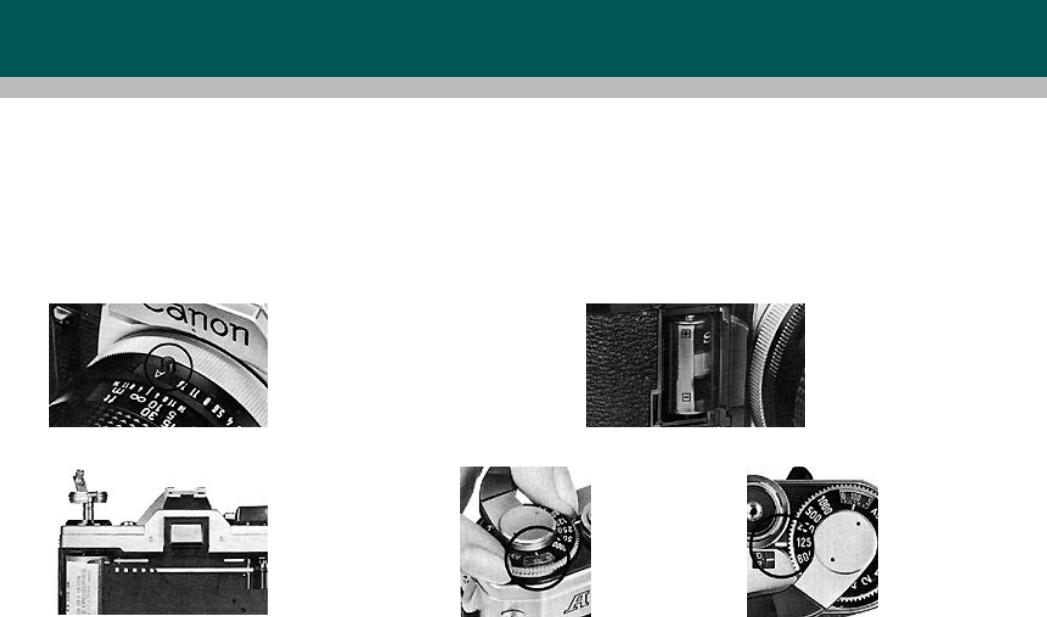
The Canon AE-1- Basic Operations Index Page
Modern Classic SLR Series
The Canon AE-1 - Camera Operation Part I
.
If you have owned or purchase a AE-1, these are few essential but relatively easy steps for you to setup your camera to take pictures (Section one for the camera, section two when you are using it with flash and
lastly, with a auto film advance device like the dedicated Auto Winder). If you intend to understand more about the details, please read through the whole site for other related content to fully explore the potential this camera can offer you.
Basic Setup Steps for Camera Operations
1.Set the aperture ring of the lens to the"A" mark. |
2. Load the battery. |
3. Load the film. |
4. Set the ASA film speed. |
Select a shutter speed. |
file:///H|/camaras de fotos/basic1.htm (1 de 3) [08/10/2007 05:39:28 p.m.]
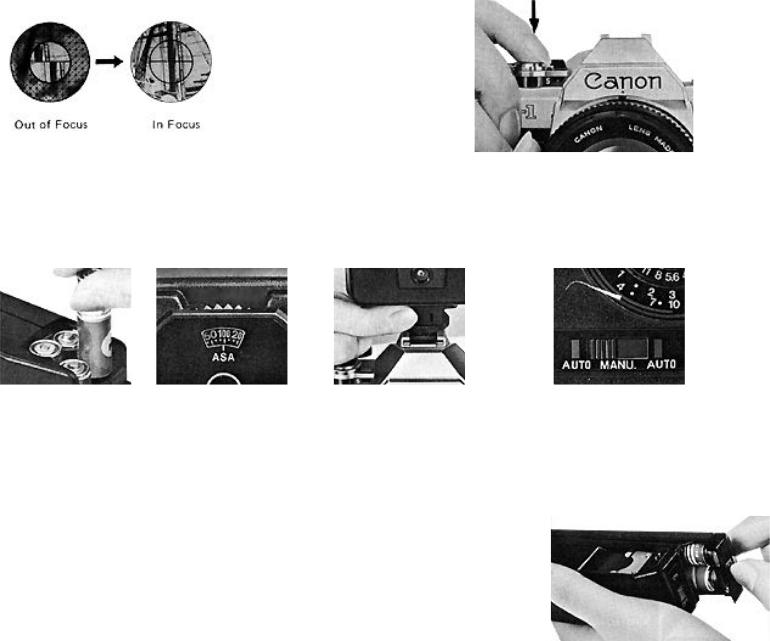
The Canon AE-1- Basic Operations Index Page
5. Look into the viewfinder Compose the picture and focus. |
6. Advance film; Check exposure. Press the shutter button. |
Photography with earlier flash unit 155A automatic Flash photography (Or any dedicated flash units by Canon)
1. Load the batteries. |
2. Set the ASA film speed |
3. Mount the Speedlite 155A |
4. Turn the main swittch5. Set the AUTO/MANUAL switch |
|
(Or equivalent) onto the camera |
||||
|
|
|
6. Focus, compose and press the shutter buttton to take the picture.
Photography with the Canon Power Winder A
1.Remove the Battery Pack A.
2.Load the batteries into the Battery Pack A.
3.Attach the Battery Pack A to the Power Winder A.
4.Take off the winder coupler cover.
5.Attach the Power Winder A to the AE-1.
6.Turn the main switch on.
7.Focus and press the shutter button.
file:///H|/camaras de fotos/basic1.htm (2 de 3) [08/10/2007 05:39:28 p.m.]
